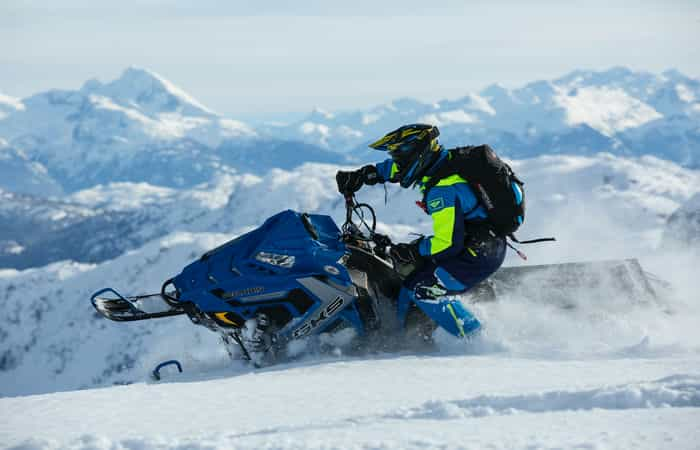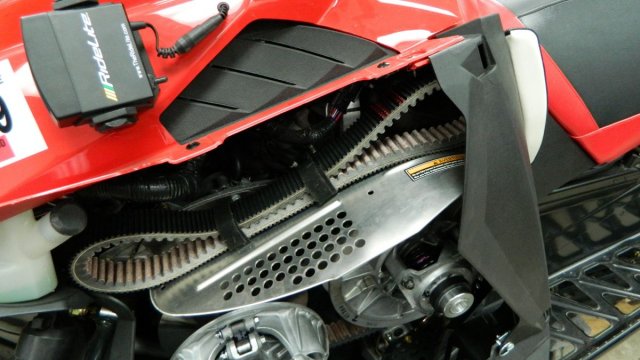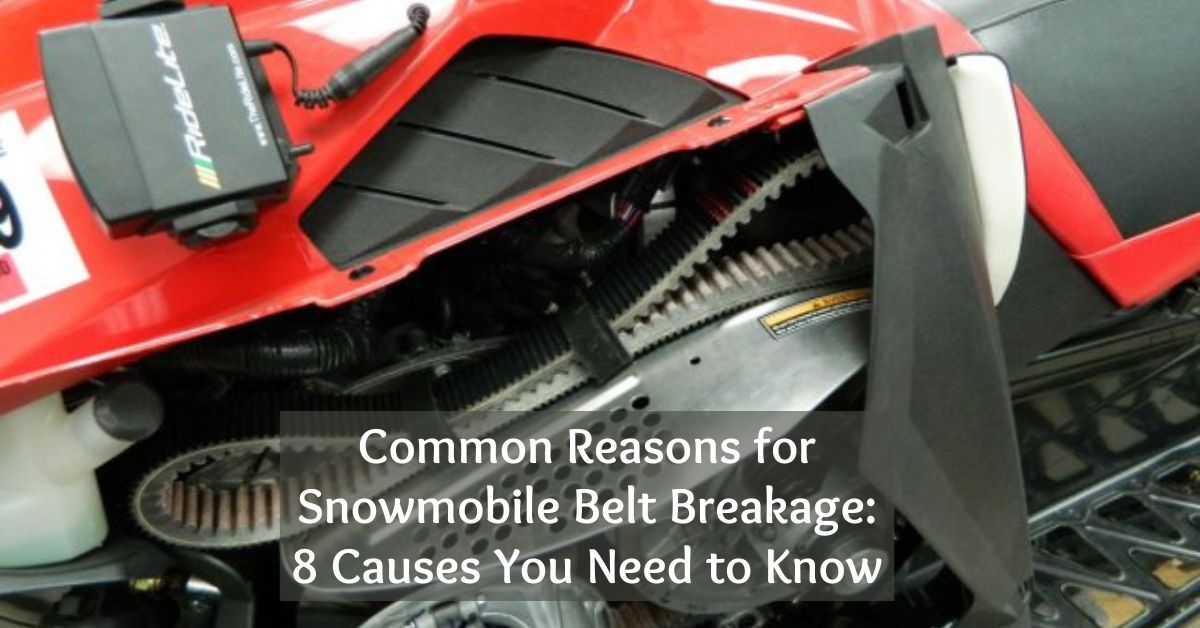A snowmobile belt is a crucial part of a snowmobile that pushes the machine forward. When you leave for the trail or the wilderness, it’s critical that your snowmobile drive belt is in good operating condition. So here is a list of why do snowmobile belts break so you can avoid them.
What Can Cause Belt To Break?
Aggressive Driving

We’ll start here because it’s a common yet widespread problem. A ‘tensile cord break’ might occur as a result of a sudden and rapid increase in engagement RPM.
Most of us simply refer to it as ‘ripping the belt in half’. Good quality belts, such as the Gates G-Force RedLine, are reinforced with carbon or aramid cords, but even the toughest materials are unlikely to sustain reckless throttle use.
Poor Maintenance

Improper maintenance, or a complete absence of it, can lead to a plethora of problems. This lack of attention to detail can cause tiny fissures in the rubber surface, allowing some of the cogs/ribs to escape.
This will result in gaps and spaces on the belt, which will lead to a variety of operating issues. So make sure you are following proper maintenance protocols provided by your manufacturer.
Deflection Of Belt
When you apply the throttle, your clutch begins to close and ‘catch’ your belt, causing the machine to go forward. If your deflection is too loose, it will take more speed before the clutch grabs the belt, resulting in a ‘harsh’ engagement of your drive.
It will grip you quite unexpectedly, putting a lot of strain on the fibers in your belt. If your deflection is too tight, the machine will only gently grip the belt when idling, producing friction and heat. So maintaining a balance is important.
Inappropriate Belt Break In
The sides of your belt must mate with the faces of your clutches. Failure to adhere to your machine’s belt break-in procedure will result in an unsatisfactory mate between the belt and the clutch face.
This results in more friction and heat being transferred to your belt. This will also reduce the lifespan of your clutch and belt. After the outer material has been broken in, it will solidify and retain its shape, so be careful.
Ingestion Of Snow
Check that your panels are securely and snugly fastened, with no holes or damaged venting. Any snow or moisture in this location can cause the belt to slip out of its grip on the clutch.
A slipping belt generates additional heat and damages the belt mating surface. It might also affect the other nearby machinery by creating congestion.
So make sure that the snow is not entering any crucial part of your snowmobile and that the engine and its surroundings are covered properly or at least not altered from factory settings.
Wrong Machine Belt
Sleds today have far greater torque and power than older models. The additional torque places a significant strain on the drive belt.
So you need to make sure you’re wearing a belt that can withstand all of that. You may be able to buy a belt that is the same size as your OEM belt for less money, but it may not be rated for your snowmobile’s capabilities.
Spend the extra money upfront for a snowmobile-specific drive belt, and you will save money in the long run by not having to change belts as frequently.
Irregularities In Clutch
Damaged clutches can also cause wear on a drive belt, causing it to fail prematurely. First, look for obvious issues. Burrs, cracks, and other anomalies should be looked for on both clutches where the belt rides, especially on the sheaves.
If the belt is continually rubbing up against or caught on something, it will wear out quickly. If nothing appears to be incorrect where the belt rides, look for additional issues with the clutches.
Worn bushings, springs, ramps, and rollers can all cause clutch wobbling. That wobbling will cause the belt to rub strangely on the sheaves and accelerate belt wear.
Misalignment of the clutch is also a primary cause of premature belt wear. The belt will run crooked if the primary and secondary clutches are misaligned.
Running crooked on the clutches puts extra strain on the belt’s sidewalls. If the alignment is wrong, your sled will go through drive belts quickly.
Most riders can check clutch alignment at home, and it should be the first place to look if your sled is eating belts. And just because your sled is new doesn’t mean everything is properly aligned. Even new snowmobiles might have misaligned clutches.
Improper Storage

Some belt problems, believe it or not, can be traced back to how they are stored after being cranked out of the factory. While there isn’t much a person can do about how belts are handled by the sellers, we can take some precautions when we take the thing home.
Special care should be given if it’s being maintained as a spare rather than being fitted on a machine right away. There’s never a good reason to turn a snowmobile belt inside out, at least not for the sake of proper storage.
Bending its back doesn’t help, nor does twisting it into new and exciting forms while trying to fit it into a too-small storage compartment. Keeping a spare belt clean may seem apparent, but it isn’t always top of mind, so inspect it before hitting the trails.
This concludes our article on Why Do Snowmobile Belts Break? 10 Common Reasons. We hope you find this article useful and if so please like and share this article. Also, comment down your suggestions below.
You may also like Snowmobile Maintenance Checklist| Complete 2023 Guide.
FAQs (Frequently Asked Questions)
How long does it take to break in a snowmobile belt?
For 5 to 10 kilometres, use low gear (if available) while varied speeds and avoiding wide open throttle. If no low gear is available, vary at moderate speeds for 50 kilometres while avoiding wide open throttle.
Do you need to break in a snowmobile belt?
You should ideally have your drive belts broken in and ready to go before putting them in the spare belt holder. Otherwise, you should take it slowly when installing it.
What is the shelf life of a snowmobile belt?
Even when properly stored, belts will begin to degrade after 7 years. Beyond seven years, assuming appropriate storage, a 10% annual drop in service life can be projected.
What causes a belt to break?
A belt that is not correctly tensioned will ride too loose or too tight on the pulley. A belt that is overly slack on a pulley can slip, resulting in heat buildup from friction. This heat will harm your rubber belts, causing them to fracture and shatter.
Can I drive with a broken belt?
You can drive for a short distance with a broken serpentine belt, but you should keep an eye on your temperature gauge because your engine will overheat in a matter of minutes. Do not drive your vehicle if your engine becomes hot.







